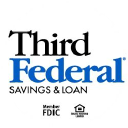/ factorpad.com / stocks / f76wqh.html
An ad-free and cookie-free website.
Our quantitative data points are meant to provide a high-level understanding of factors in equity risk models for Tfs Financial Corp. Portfolio managers use these models to forecast risk, optimize portfolios and review performance.
We show how TFSL stock compares to 2,000+ US-based stocks, and to peers in the Finance and Insurance sector and Savings Institutions industry.
Please do not consider this data as investment advice. Data is downloaded from sources we deem reliable, but errors may occur.
 TFS Financial Corporation , a federally chartered stock holding company, conducts its principal activities through its wholly owned subsidiaries and had total consolidated assets of $14.6 billion at September 30, 2020. The principal line of business of TFS Financial Corporation and its subsidiaries (collectively, TFS Financial or the Company) is retail consumer banking, including mortgage lending, deposit gathering, and other insignificant financial services. On September 30, 2020, approximately 81% of the Holding Company's outstanding shares were owned by a federally chartered mutual holding company, Third Federal Savings and Loan Association of Cleveland, MHC (Third Federal Savings, MHC). The thrift subsidiary of TFS Financial is Third Federal Savings and Loan Association of Cleveland (the Association).
TFS Financial Corporation , a federally chartered stock holding company, conducts its principal activities through its wholly owned subsidiaries and had total consolidated assets of $14.6 billion at September 30, 2020. The principal line of business of TFS Financial Corporation and its subsidiaries (collectively, TFS Financial or the Company) is retail consumer banking, including mortgage lending, deposit gathering, and other insignificant financial services. On September 30, 2020, approximately 81% of the Holding Company's outstanding shares were owned by a federally chartered mutual holding company, Third Federal Savings and Loan Association of Cleveland, MHC (Third Federal Savings, MHC). The thrift subsidiary of TFS Financial is Third Federal Savings and Loan Association of Cleveland (the Association).
Many of the following risk metrics are standardized and transformed into quantitative factors in institutional-level risk models.
Rankings below represent percentiles from 1 to 100, with 1 being the lowest rating of risk.
Stocks with higher beta exhibit higher sensitivity to the ups and downs in the market. (↑↑)
Stocks with higher market capitalization often have lower risk. (↑↓)
Higher average daily dollar volume over the past 30 days implies lower liquidity risk. (↑↓)
Higher price momentum stocks, aka recent winners, equate to lower risk for many investors. (↑↓)
Style risk factors often include measures of profitability and payout levels.
Companies with higher earnings generally provide lower risk. (↑↓)
Companies with higher dividend yields, if sustaintable, are perceived to have lower risk. (↑↓)
/ factorpad.com / stocks / f76wqh.html
A newly-updated free resource. Connect and refer a friend today.